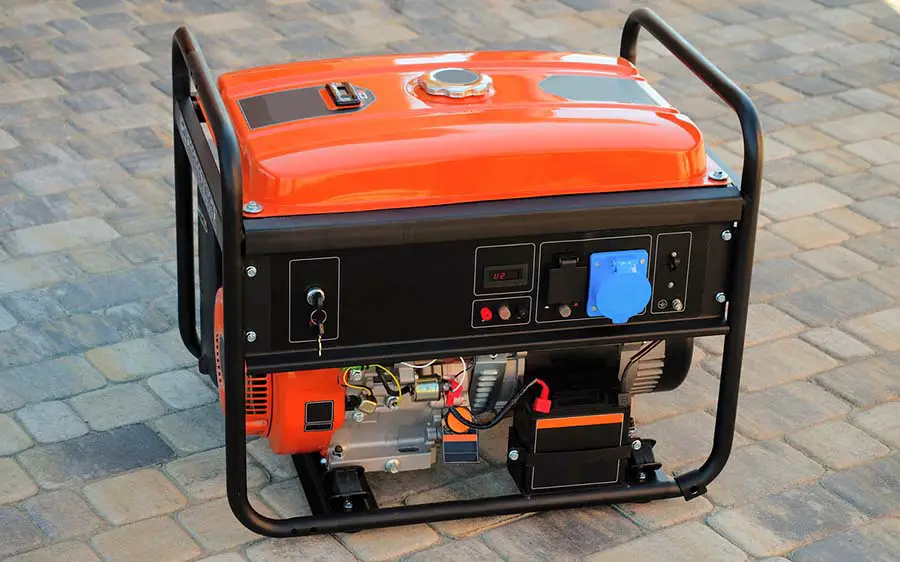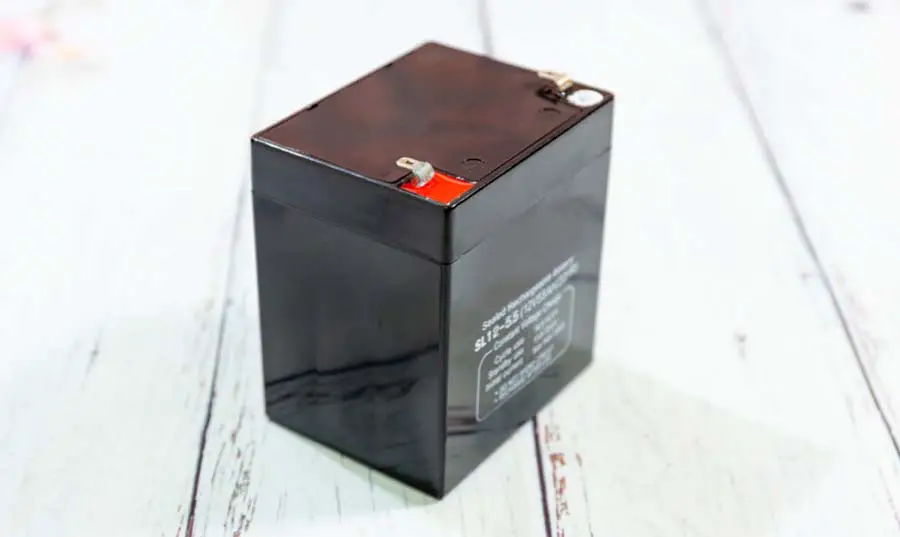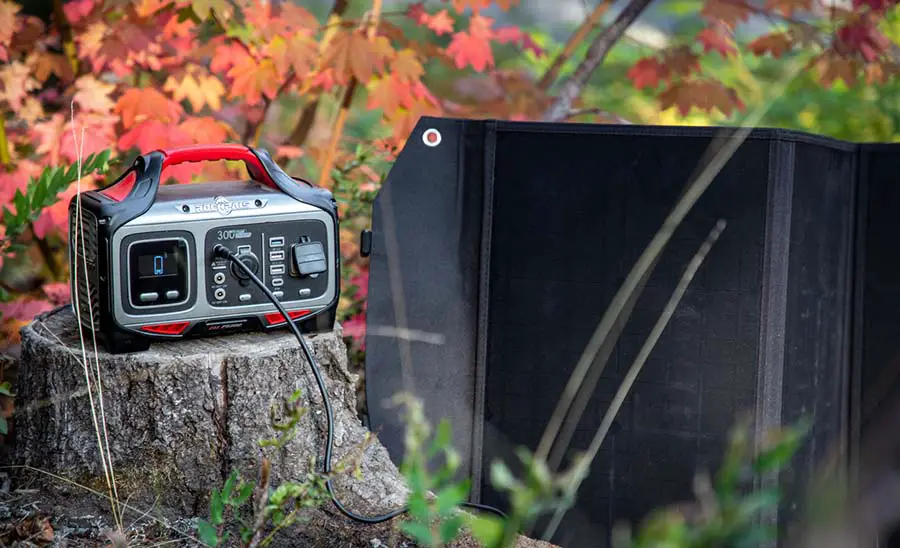
You might be wondering, does a portable generator charge its battery?
Most portable generators will automatically recharge their batteries while operating, but some models do not and require periodic manual charging. If your generator recharges its battery but doesn’t regularly use it, you must often manually plug it in to ensure the battery remains charged.
Here, we look at how a generator charges its battery and many other questions you are likely to have while dealing with your portable generator’s battery.
How Does a Generator Charge Its Battery?
Even though it depends on the type of generator, most models, including Honda generators, charge their batteries while in operation.
Starting the generator engine discharges the battery, meaning that the engine needs to operate for some time to replace the charge used to kick start it.
However, most generators require you to plug a trickle charge into the mains power. Doing this will ensure that your batteries remain fully charged every time power goes off.
You should always fully charge your battery before storing your portable generator. Ensure you turn on the generator at least once in thirty days and allow it to operate for a few minutes. It’ll allow the generator to remain well-lubricated and run smoothly.
Below are procedures to take if you want to charge a deep cycle battery on your portable generator:
- First, inspect the better to ensure that it’s in good condition.
- Fill your generator with gasoline.
- Attach the alligator clips of the charger to the battery.
- Plug the charger into your generator’s 120V outlet. Allow the generator enough time to charge.
How Long Does It Take a Generator To Charge Its Battery?
All consumer generators have a 12V DC socket. Some manufacturers call it a ‘battery charger.’ The socket can power small 12V devices, including televisions. The output from the socket is a 13.6V unregulated power.
You might be wondering, how long will this power take to charge your generator battery?
AGM and Lead Acid Batteries
The generator’s unregulated 13.6V is relatively low to allow full and speedy battery charging. The power may half-charge a flat 100A AGM or lead-acid battery within 6-hours. Progressive charging reduces going forward from there.
It might take an additional 24-hours to charge the battery to over 70%. You’ll need one week to charge the battery fully.
However, there is a more effective and easier approach. Charge your battery using a 120V or 240V battery charger powered by your unit’s 120V or 240V outlet.
The size charger and safe charging rates vary with the battery type and capacity. It’s true, especially for LiFePO4 batteries. Most lead batteries less than 180-200 amp-hour have a recommended maximum charging current below 40A. A 25A charger is therefore adequate for such batteries.
Charging Voltage
The maximum charging voltages for gel and AGM batteries is around 14.6V. However, you should confirm with the manufacturer’s recommendation.
For the case of AGM and lead-acid batteries, once fully charged, the charger needs to drop to about 13.2-13.3V to guarantee extended battery life and avoid overcharging.
High-Temperature Charging
Battery manufacturers recommend an ambient charging temperature of 250C. You should always check the manufacturer’s recommendations when charging in a high-ambient temperature environment like an engine bay.
Batteries such as AGMs aren’t suitable for engine bay installation. Some batteries will void their warranties if installed in engine bay temperatures.
If you don’t have any realistic approach to relocating your battery in a high-temperature environment, you can charge it at a lower maximum voltage if feasible. Manufacturers recommend the lowest setting.
Importance of Battery Specifications
The charging problems experienced by many people result from ignoring battery specifications. The most important for specific batteries such as AGM and LiFePO4 is the maximum charging current and maximum charging voltage.
Different battery types pose different chemical reactions when charging, thus the need for charging in a specific way. The charge profile has a maximum charge voltage and will offer the battery current in the right way to guarantee it charges to a 100% state of charge.
If you settle on the wrong charge or match it with a wrong profile, expect to reduce the battery life and health. There is also a high potential of your battery failing.
Keeping Your Generator Battery in Good Condition

To be guaranteed a more economical and safe generator operation, you need to ensure that you perform continued maintenance. You should regularly check the critical components and all other elements that make up a generator.
Most failures related to starting your generator originate from the battery—the lack of maintenance and misuse of the battery results in its deterioration and improper functioning.
Since the battery is prone to lead sulfate accumulation, it is susceptible to damage. It would therefore help to pay attention to critical components of the generator.
Basic Aspects:
- The battery charges when the engine is operating or connecting the battery charger to the main supply unit. When the battery is charged, it’ll be about 12.4-12.6V.
- When you handle a battery, it should be disconnected.
- Suppose your generator has stopped for a long period and there is no supply from the mains to your auxiliary battery charger. In that case, you should either cut the power or disconnect the battery terminals.
- Lack of maintenance, misuse, and high temperatures cause the generator battery to stop functioning effectively and require replacement.
- Maintaining your batteries is a straightforward process and comes at a cheaper cost.
Generator Battery Maintenance
Check Your Battery Water Level
The battery water level always reduces whether the generator has stopped or is in constant use. A low water level will always damage your generator battery. It would therefore help to add distilled water from time to time.
Tightening & Cleaning Battery Terminals
When the battery is functioning, there are gaps between the poles and terminals, thus leading to oxidation. We, therefore, recommend that you keep your battery terminals clean and tight. You can also put their vaseline or any other protection product to limit oxidation.
Check The Voltage
It would be best if you carried out tests from time to time. Connect the negative and positive poles to the multimeter in the DC voltage position. The results shouldn’t be less than 12V.
A lower value won’t supply power to the electrical part of the generator. The battery will not, therefore, provide enough power to the starter. Here, the best option is to replace the generator battery.
Start Your Generator Frequently
Leaving your generator idle for an extended period causes harm to the battery. It would therefore help to start your generator periodically.
The Best Portable Battery Generators

You’ll need a portable battery generator when camping since you might fail to find the main supply to start the unit. However, with the high number of portable battery generators, it becomes confusing to select the ideal one.
Below are the top portable battery generators to consider:
1. Jackey Portable Power Generator Explorer 500
It is a product designed with a 518Wh battery with a peak power of 1000W and a rated power of 500W. The battery delivers 110V to different power devices.
If you want to charge the battery without electricity, you can use an off-grid solar. You can use the Jackery SolarSage 100W for this purpose since it takes only 14-hours to charge the battery fully.
The product is ideal for outdoor use, and you can include it in your trips, excursions, and travel. You can also use it for camping, lighting, car travel, and hunting when necessary. It’s, therefore, the best solution, especially in areas that do not connect to electricity.
This generator can charge critical components such as laptops, mobile phones, and portable fans. However, it won’t support components rated 500 watts, such as an electric kettle, air conditioner, microwave, and drill machine.
The generator will take 8 hours to reach a full charge if you connect it to an AC outlet. It also has a BMS system that protects electronic devices from overheating, overload, and over-voltage issues.
Key Features
- The generator is designed with a battery of 518Wh with a peak power of 1000W and a rated power of 500W.
- You require 14 hours to charge the generator from a 100W solar panel and 8 hours to charge it from an AC outlet.
- It has a BMS system to protect devices from over-voltage, overload, and overheating.
- The generator has an LCD screen that shows the output and input levels and battery life.
- It’s lightweight for you to carry anywhere.
2. Rockpals 300W Lithium Portable Power Station
The Rockpals 300W Lithium Portable Power Station comes with a squared box design meant for taking it for outdoor activities.
The generator has a 75000mAh lithium battery rated at 3.7V and 75A. With it, you can charge a drone ten times, a mobile phone 25 times, a mini-fridge for 4-5 hours, a laptop five times, and run lights for 70 hours.
It produces a 300W pure sine wave that peaks at 600W. There are three ways of recharging the generator: a car socket, solar panel, or wall outlet.
The generator battery will require about 6-7 hours to charge fully from a wall outlet or car charger.
The generator is ideal for use on construction sites, RV, emergencies, etc. It comes with a display unit to see data relating to output, input, and operating voltages.
With a weight of about 7.5 lbs and a 6.5 x 3.1 x 6.9 inches footprint, you can carry it with you anywhere you want.
For output options, the generator has 5 DC outlets, an AC socket, 2 USB 3.0 quick charge ports, and 2 USB 2.1A. The generator allows you to connect multiple devices at the same time.
Key Features
- It comes with a large display that shows all critical information making it easier to control
- The product is compact and lightweight, making it easier to carry to a campsite, RV project, or other outside environments.
- It comes with multiple USB and AC/DC ports, ideal for sensitive components such as cameras, phones, laptops, etc.
- It’s designed with a 75000mAh lithium battery and 280Wh solar power that offers you continuous power to power appliances in your home.
- It produces a 300W pure sine wave that peaks at 600W.
3. Progeny 280W Portable Power Station
The Progeny 280W Portable Power Station comes with a digital inverter technology that guarantees power in any condition. It produces 280Wh with a 18650 lithium battery that operates a CPAP therapy machine for about 3-4 hours.
You can employ it to charge your laptop four times, small appliances below 300W for 2 hours, and run your 32″ television without challenges. Additionally, you can take it for short travels, campsites, RV’s and use it for emergency blackouts.
You’ll also notice that the generator comes with built-in 110V, two USB 3.1A ports, and three 12V/5A DC outlets. Therefore, they can offer continuous power for charging tablets, phones, and emergency purposes.
The generator weighs 5.7 lbs making it easier to carry to any location. Since it’s noiseless, it doesn’t cause any harm to nature or your health.
Additionally, the battery generator is easier to charge. It’ll take you about 8-10 hours to charge it with either a 60W or 100W solar panel.
If you want the battery to charge faster, you can connect it to a car charger or wall outlet. It’ll reduce the charging to about 5-6 hours.
The generator is also designed with a BMS support system to offer safety against overload, short circuit, overheating, and over-voltage challenges.
Key Features
- The generator is designed with 27 2600mAh lithium batteries to offer multiple time charging facilities for your devices.
- It weighs about 57 pounds making it easier to carry to fields, campsites, and RV’s
- You can charge the unit’s battery using a wall outlet, solar panel, or car charger.
- The generator is designed with a BMS support system to offer safety against overload, short circuit, overheating, and over-voltage challenges.
- It comes with two USB 3.1A ports, a 110V AC outlet, and three 12V/5A DC outlets.
4. MARLBORO 167Wh Portable Battery Generator
The generator is the most lightweight and compact product in the present market. With about 3.6 pounds, you can carry it to any location you wish, including campsites. The weight is comparable to two coffee mugs.
The product is versatile and ideal for multiple uses. Many people appreciate it for its convenient shape and intelligent management of energy consumption.
The generator has a 13500 mAh lithium battery producing 150 Wh power, making it among the most portable products available.
You can recharge this generator with three methods. It takes about 11 hours to charge with a 12V car charger and 7-8 hours with a 110V wall outlet.
You can also recharge it using solar panels with the charging duration depending on the sun’s heat. The generator comes with ten unique outlets that you can use to connect multiple devices at a time.
You’ll also notice five super LED lights to show the battery life. Additionally, it comes with a BMS safety feature to protect electronic devices from any unexpected challenges.
Key Features
- It weighs about 2.9 pounds making it easy to carry to a campsite, party, hiking, or camping
- You can charge the unit using a wall outlet, solar panel, or car charging adapters
- The generator is designed with a 13500 mAh lithium battery producing 150 Wh of power
- It comes with 5 LED lights to indicate the battery percentages and reach up to 50 feet
- The product has a UL certification
- It has a BMS safety system to protect against overload and short circuits
5. Goal Zero Yeti 500X Generator
If you seek a perfect generator for CPAP, then look no further than the Goal Zero Yeti 500X Generator. The generator has a dedicated CPAP construction that powers your machine at 65 watts.
The generator will run your CPAP machine for about 8 hours, providing you with a full night’s sleep without challenges. It also has a 500WH lithium-ion battery that offers clean energy having a sine wave technology.
With power from this generator, you can operate small appliances like TV, blenders, and pellet grill. It’s also reliable when powering laptops, lights, drones, cameras, and cell phones.
You’ll get 12V car output, 120V AC output, and dual USB-C, USB-A having a fast charge facility. Every output section is designed with a power switch to keep the ports off if you aren’t using them.
Charging the generator presents multiple options, including car, 22V input solar, or big generators. There is also a control panel to monitor battery status, output, and input.
Key Features
- The generator is designed with a dedicated internal setup for operating a CPAP machine for 8 hours at 65 watts
- The generator comes with a 12V inverter circuitry having a 500Wh lithium-ion battery to provide clean energy
- There are several output options, including 12V DC output, 120V AC output, USB type C, and A
- It comes with an efficient and fast charging facility with CAR output, solar panel, and AC input
- It has a durable construction and comes with a tough handle for transporting the generator easily
Considerations When Purchasing a Portable Battery Generator
Not all the available generators on the market are perfect. There are factors you need to consider while purchasing a generator. Below are the most critical factors to help you:
Power
Power is the first thing to look at, whether your generator is for home or industrial use. You need to determine the amount of power you require based on the appliances in your home.
Buy a generator that can provide more power than the one you require.
Autonomy
It represents the number of hours you want to use the generator. Most portable rechargeable generators have a long autonomy.
Weight
Here, it would be best if you bought a generator that you’ll find easier to carry from one place to another. For instance, you can’t take a heavier generator with you for a hike.
Charging Method
The final consideration involves how you want to recharge the generator. Three main charging options include a car charger adapter, solar panel, or wall outlet.
Buy a generator depending on the charging method that is convenient to you.
Conclusion
As we have seen, some generators, such as Honda generators, charge their batteries while the generator is operating. However, you’ll have to use other charging means for other generators, such as using a wall outlet, solar panel, or car charging adapters.
To get an easy time when the power goes off, you should buy any portable battery generators discussed above. Before you buy any generator, ensure you consider factors such as its power, autonomy, charging method, and weight.
